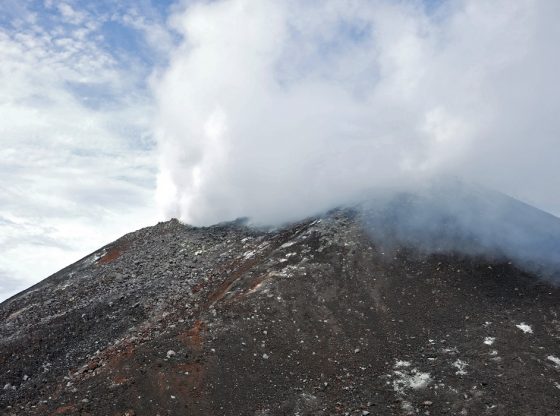Science is now sure the center of the Earth is solid and not hollow as some fiction writers like to depict it.
Scientists predicted that the Earth has a solid inner core and liquid outer core 80 years ago, based on measurements inconsistent with just one single core.
A solid core should accompany a special kind of seismic wave, called J waves, but it’s been difficult to actually detect the waves—until now.
Seismologists from the Australian National University (ANU) have adapted a method used successfully to study the Earth’s crust and upper mantle to provide new evidence of what lies inside.
In their recent work, the ANU’s Hrvoje Tkalčić and Thanh-Son Pham cross-correlated recordings of a range of large earthquakes on a planetary scale and identified previously unobserved seismic phases in Earth’s correlation wavefield.
“We found the inner core is indeed solid, but we also found that it’s softer than previously thought,”
“It turns out, if our results are correct, the inner core shares some similar elastic properties with gold and platinum.“The inner core is like a time capsule, if we understand it we’ll understand how the planet was formed, and how it evolves.”
– Associate Professor Hrvoje Tkalčić.
So, rather than spotting the waves directly, the reserachers looked at global seismogram data and correlated the result and among all of the different ways that the waves could travel, outer core and inner core, they were able to pick out specific signals representing the J waves traveling through the inner core.
In their paper published in the journal Science, the pair says they were able to detect shear waves in the inner core, but in so doing developed new estimates for properties such as shear-wave speed, resistance to shear and attenuation.
The researchers explain that there’s further work to be done, such as taking more data from more seismograms and placing seismic measuring equipment in new places.












![OpenAI. (2025). ChatGPT [Large language model]. https://chatgpt.com](https://www.illustratedcuriosity.com/files/media/55136/b1b0b614-5b72-486c-901d-ff244549d67a-350x260.webp)
![OpenAI. (2025). ChatGPT [Large language model]. https://chatgpt.com](https://www.illustratedcuriosity.com/files/media/55124/79bc18fa-f616-4951-856f-cc724ad5d497-350x260.webp)
![OpenAI. (2025). ChatGPT [Large language model]. https://chatgpt.com](https://www.illustratedcuriosity.com/files/media/55099/2638a982-b4de-4913-8a1c-1479df352bf3-350x260.webp)








